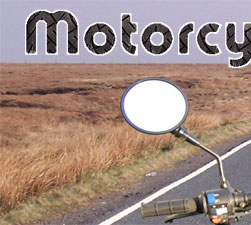|

|
Though a motorcycle is much smaller than a car, a rider is still entitled to use the entire width of his lane. Wisely managing lane position can help reduce the chance of trouble while riding. One critical use of lane management is to stay visible to other motorists. Motorcycles are less visible than cars or trucks and many drivers are not cognizant of them. Generally, it is not a wise idea to trust other motorists to do what they are supposed to do. Assume things will go wrong and be prepared for the unexpected. Ideally, the driver of the car next to you will take a moment to check his blind spot before changing lanes. Should you trust them to do that? I certainly would not trust my life to them. As a safe motorcycle rider, you have to take the initiative to make sure you are positioned so that you are visible to motorists around you. By adjusting your position within the lane, you can help to stay out of blind spots and ensure other motorists are aware of you.
Another reason to utilize the full width of the lane while riding a motorcycle is to avoid obstacles. To four wheeled vehicles, things like potholes or debris are nuisances but they can pose serious risks to motorcycle riders. By scanning ahead, a smart motorbike rider can change lane position to avoid these threats.

Most roads are crowned, meaning
they are raised slightly in the center. This is intended
to help streets drain properly toward the sewer grates.
It also means that some parts of the road may offer a more
stable ride, especially in wet conditions. This is another
valid reason for managing lane position while riding a motorcycle.
Another technique for riding in wet conditions is to ride
in the tire tracks of a vehicle in front of you. Since these
tracks should be less slick, adjusting your position in
the lane to take advantage of them can reduce the chances
of traction loss. On a side note, roads are the most slippery
when rain first begins to fall. Rainfall can stir up oils
on the street early in a storm. Eventually, the rain water
will rinse the oils off so it can be wise to either let
the storm blow over or at least get settled in before beginning
to ride in the rain.
When changing lanes, it is critical to always communicate
your intentions to the motorists around you. You can use
your motorcycle's turn signals, flash your brake light,
and even your horn (but sparingly) to let help other drivers
anticipate your movements. Also, remember to use your mirrors
and check your blind spot before making any lane changes.
|






